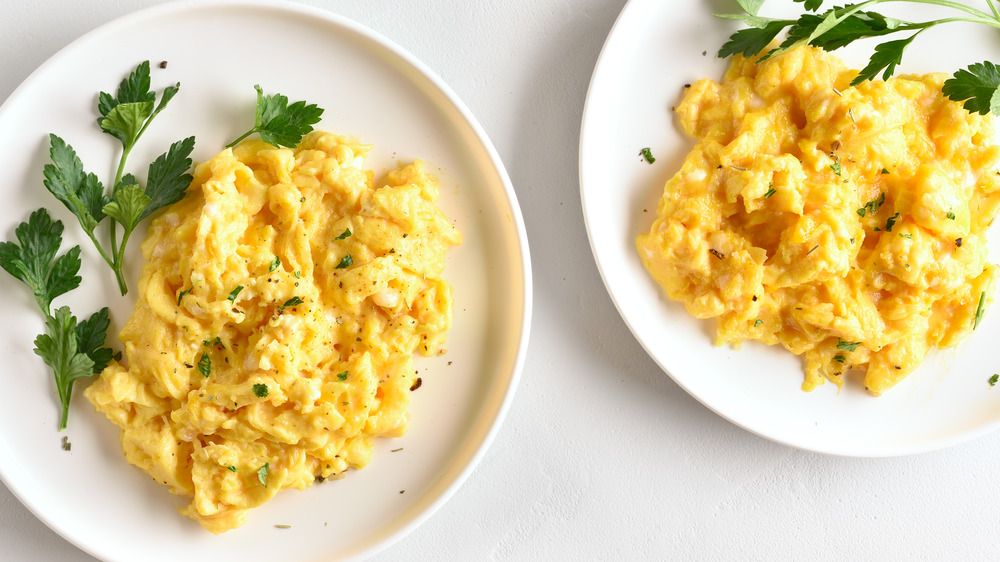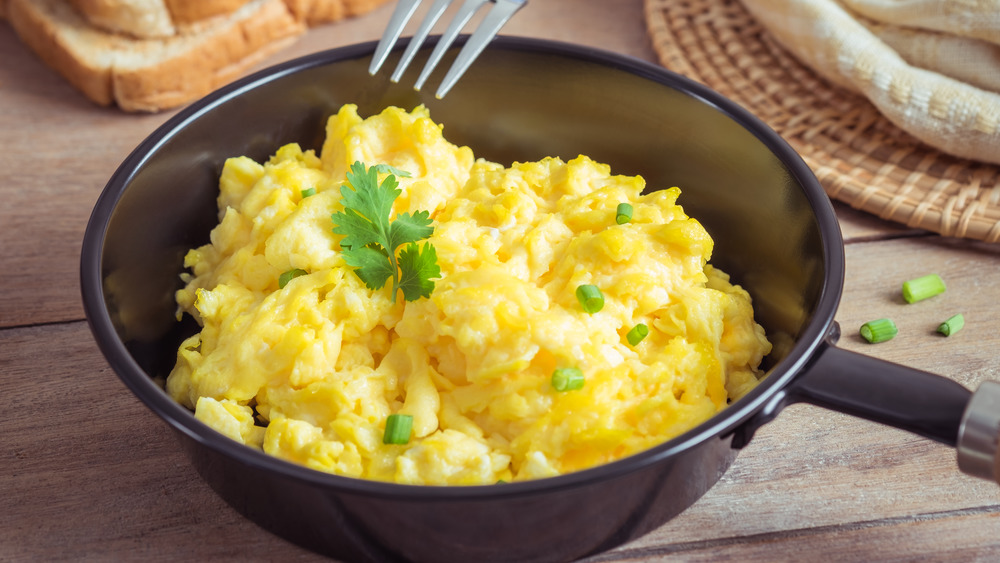The Easiest Ways To Cook Eggs Is Also The Hardest
Eggs are a nutrient-dense ingredient that can truly help jumpstart your day. Rich with B vitamins and high-quality protein, eggs can keep you full and help you get energized in the morning, according to Live Science. Of course, there are a number of methods for making and enjoying eggs — ranging from sunny side up to poached — but these techniques can take time and require careful attention as to not pop or overcook your yolks. That's where scrambling comes in. Scrambled eggs are nearly fool-proof. They don't require the yolk to hold its shape or deliver any specific consistency; simply just crack the eggs, give them a vigorous stir, and cook.
Notice how we said "nearly fool-proof," though. When it comes to making the perfect scramble, common mistakes such as adding milk to raw eggs before cooking, or leaving the eggs in the pan for too long, can lead to runny or rubbery eggs, respectively (via Bon Appétit). So, while the art of scrambling eggs may seem mundane, mastery of it is essential to serving a restaurant-quality breakfast at home.
For perfect scrambled eggs, focus on the heat level
While it is traditionally believed that the creaminess and fluffiness of a good scramble come from the addition of dairy products like milk or cream before cooking, experts at Bon Appétit say otherwise. Instead, they suggest you focus on the heat level at which you cook your eggs and how you agitate them while they are heating up. Whether you desire creamier scrambled eggs with small curds or a fluffier scramble with drier curds, the key is to cook the eggs slowly over medium-low heat.
One important factor is that you stir your scramble with a spatula very consistently. As Epicurious explains, "Your goal here is to keep the eggs in perpetual motion." This method may seem painstakingly laborious, as it calls for you to attend to your eggs from the minute they hit the pan, but the effort is worthwhile if you want a remarkable plate of scrambled eggs.
Starting with a cold skillet and slowly bringing the eggs to temperature while stirring continuously will create smaller curds and a creamier consistency, according to Serious Eats. If you prefer larger curds, you should melt the butter in the pan first and then add eggs to a warm skillet to generate larger pockets of gas. Another trick? Remove the scrambled eggs from the heat just before they are fully cooked through and allow the residual heat to finish the cooking process for a minute or two before enjoying.

